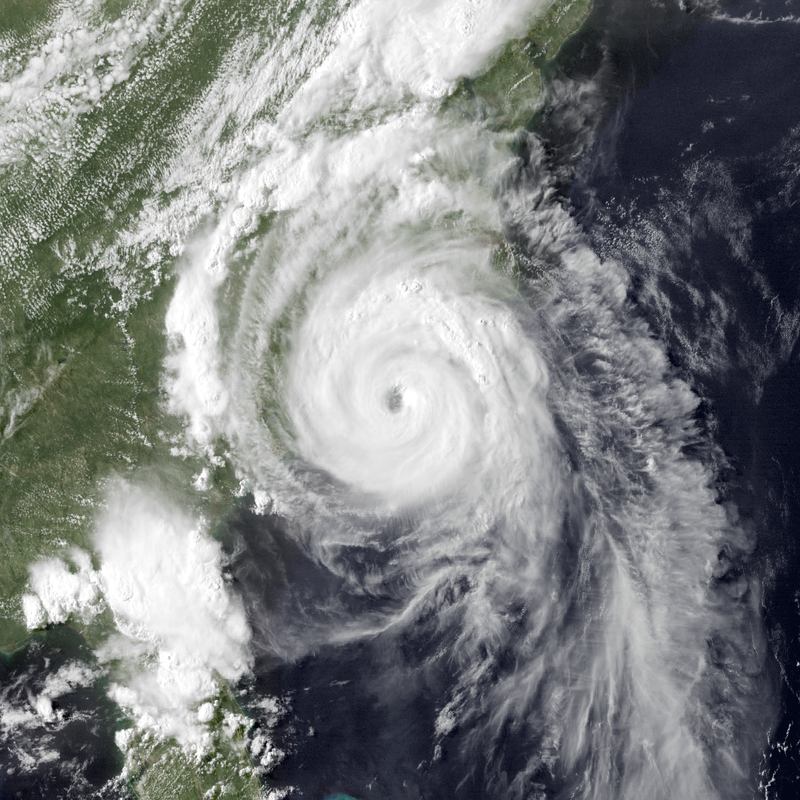This research article focuses on Hurricane Arthur, an exceptional storm that made landfall in the U.S. state of North Carolina during the 2014 hurricane season. Arthur holds the distinction of being the earliest known hurricane to strike the state in any calendar year. It also marked the first hurricane to make landfall in the United States since Hurricane Isaac in 2012. This article provides a comprehensive analysis of the storm’s formation, intensification, impact on the affected areas, and the measures that can be taken to enhance preparedness for future hurricanes.
Introduction: On June 28, 2014, Hurricane Arthur developed from a non-tropical area of low pressure over the Southeastern United States, eventually emerging into the western Atlantic Ocean. After organizing and strengthening, Arthur was classified as a tropical depression on July 1 and quickly escalated to a tropical storm later that day. The storm attained hurricane status on July 3 and further intensified to a Category 2 hurricane on the Saffir–Simpson hurricane wind scale, with peak winds of 160 km/h (100 mph) recorded at 01:00 UTC on July 4.
Landfall and Impact: At 03:15 UTC on July 4, Hurricane Arthur made landfall over North Carolina’s Shackleford Banks, situated between Cape Lookout and Beaufort. The storm intensified slightly further, with a minimum atmospheric pressure of 973 mbar (hPa; 28.70 inHg). The hurricane brought about significant disruption, prompting the declaration of a state of emergency in 26 North Carolina counties. Mandatory and voluntary evacuations were implemented along the state’s coast, and several hundred government personnel were deployed to aid in evacuation and preparation efforts.
Despite the storm’s intensity, damage was relatively limited. Strewn debris and inundated roads were the primary consequences, and approximately 44,000 power outages were reported. Although widespread flooding occurred along the northern sections of the coast, there were no reported deaths or serious injuries in connection with Hurricane Arthur. However, due to the storm’s proximity to the Independence Day holiday, numerous festivities across the United States were canceled or rescheduled, causing disruptions to holiday plans and local economies. The estimated total losses from Hurricane Arthur amounted to approximately US$10 million.
Impacts in New England and Atlantic Canada: As Hurricane Arthur transitioned into an extratropical cyclone, it continued northeastward, affecting New England. The storm caused flash flooding, additional power outages, and widespread road closures, leading to the suspension of ferry services. The most severe impacts, however, were felt in Atlantic Canada and Quebec, where Arthur’s remnants produced hurricane-force gusts that resulted in widespread damage.
Countless trees and power lines were toppled across the region, leaving over 300,000 residents without electricity. The damage to the power grid in Nova Scotia was deemed the worst since Hurricane Juan in 2003. Restoration efforts were protracted, with thousands still without power even ten days after the storm. Repairing the electrical grid in Nova Scotia and New Brunswick cost approximately C$8.4 million (US$7.9 million) and C$23 million (US$21.6 million), respectively. The response of utility companies, particularly Nova Scotia Power (NSP) and New Brunswick Power (NBP), faced criticism from both customers and politicians due to communication breakdowns and delays in restoration efforts.
Enhancing Preparedness: In light of Hurricane Arthur’s impact, it is crucial for residents in hurricane-prone areas to prioritize preparedness. The following measures can significantly contribute to protecting lives and mitigating damage:
- Stay informed: Regularly monitor official weather updates, evacuation orders, and emergency instructions issued by local authorities.
- Develop an emergency plan: Establish a family emergency plan, including evacuation routes, meeting points, and communication strategies. Prepare an emergency kit with essential supplies such as non-perishable food, water, medications, batteries, and important documents.
- Secure your property: Implement measures to fortify your home, such as installing hurricane shutters, reinforcing doors and windows, and trimming trees near your property.
- Review insurance coverage: Ensure your insurance policies, including homeowners and flood insurance, are up to date and provide adequate coverage for potential hurricane-related damages.
- Evacuate when necessary: Follow evacuation orders promptly and have a designated evacuation plan in place. Identify safe shelter locations in your area and have transportation arrangements ready, if needed.
Interesting Fact: As a direct result of Hurricane Arthur, reviews were initiated for Nova Scotia Power (NSP) and New Brunswick Power (NBP) due to complaints from customers and politicians regarding the restoration efforts. This incident served as a catalyst for improving emergency response strategies and strengthening the resilience of power companies in the face of future extreme weather events.
Conclusion: Hurricane Arthur, the earliest landfalling hurricane in North Carolina during the 2014 hurricane season, left a lasting impact on the affected areas. While the storm caused limited damage and no loss of life in North Carolina, it led to widespread power outages, extensive damage, and prolonged restoration efforts in Atlantic Canada. By understanding the lessons learned from Hurricane Arthur, communities can work towards enhancing preparedness, fortifying infrastructure, and improving emergency response to minimize the impacts of future hurricanes.




Leave a Reply